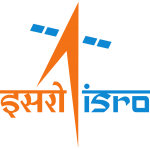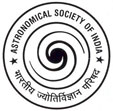October 2018:
The AstroSat Picture of the Month for October 2018 presents the false-color ultraviolet images of NGC6302 (Butterfly Nebula) using ASTROSAT. On the left is a cartoon showing the full extent of the nebula with far-ultraviolet represented in blue. The picture on the right shows the zoomed-in view of the brightest part of the butterfly shaped planetary nebula in far-ultraviolet.
Pic Credit: Kameshwara Rao and Sriram Krishna


“AstroSat Picture of the Month” is an initiative of the Public Outreach and Education Committee of the Astronomical Society of India and the AstroSat Training and Outreach Team.
Ultraviolet wings of the Butterfly Nebula
This month, APOM brings to you the ultraviolet view of one of the most spectacular objects in the sky, NGC 6302. Located nearly 3800 light years away in the constellation Scorpius, NGC 6302 is a planetary nebula, whose shape is strikingly similar to the wings of a butterfly, hence aptly named as the Butterfly Nebula. This is the second planetary nebula that we bring forth to you, the first being NGC 40, covered in the APOM issue of December 2017.
Planetary nebulae are beautiful structures formed during the last few stages of the lives of stars like the Sun or a few times heavier. As the stars burn up all the hydrogen or helium fuel, they increase in size and become redder in colour, and are known as giant stars. As the giant star passes through few more stages, it continually sheds its outer layers revealing an inner hot core called the white dwarf. The white dwarf heats up the spewed-out gas which shines in the form of planetary nebula. Many of these planetary nebulae have strikingly symmetric shapes that need not be spherical and it has been suggested that this could be due to the various physical processes occurring in and around the star when it hurls out the gas from the outer layers. These nebulae are named planetary because when astronomers first observed them, they thought that these resembled planets. We now know that this is not the case, although the name has lingered.
Prof Kameshwar Rao, from the Indian Institute of Astrophysics (IIA), and his team have been investigating planetary nebulae in the ultraviolet light. They have imaged the Butterfly Nebula through the far and near-ultraviolet filters of the Ultraviolet Imaging Telescope (UVIT) of AstroSat. Using these images, they have discovered that gas which is bright in the far-ultraviolet extends the known wings of the butterfly out to 5.5 light years from the centre, nearly three times of what is seen in the optical. The reddish coloured figure on the right is the far ultra-violet image of the Butterfly Nebula. The blue image is a cartoon that represents the full extent of the far-ultraviolet emission. These researchers argue that the extended far-ultraviolet light is due to cold hydrogen molecules in the gas present in the outer parts of the nebula which are excited by the central star. They suspect that these far-ultraviolet structures of the planetary nebula point to the possible presence of two central stars in a binary system that are gravitationally bound. The results have been published in the journal Astronomy & Astrophysics and the paper can be read here.
Click here for the entire APOM archive.
More about ASTROSAT
AstroSat, India's first dedicated multi-wavelength space observatory, was launched by ISRO on 28 September, 2015. It has five instruments on board – the Ultra Violet Imaging Telescope, the Soft X-ray Telescope, the Large Area X-ray Proportional Counter, the Cadmium-Zinc-Telluride Imager and the Scanning Sky Monitor.
Get answers to your common queries about ASTROSAT in English, in हिंदी, and in मराठी.

